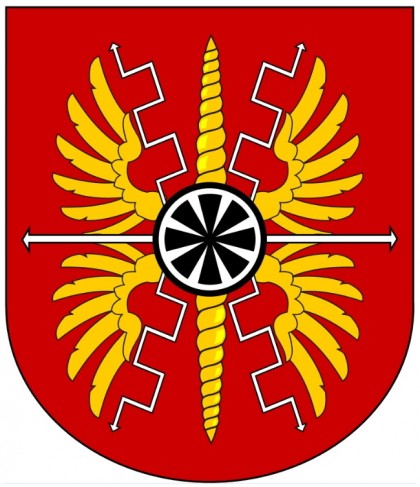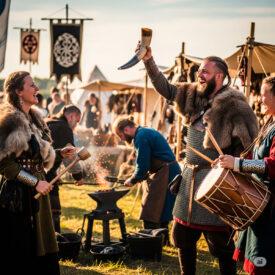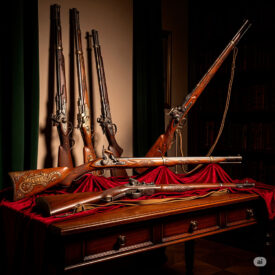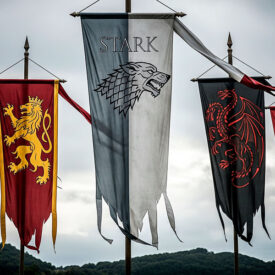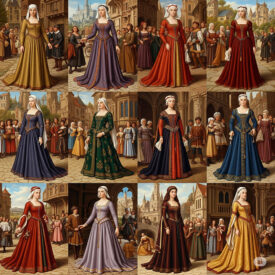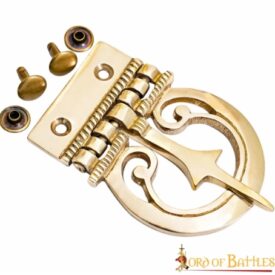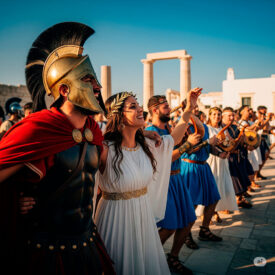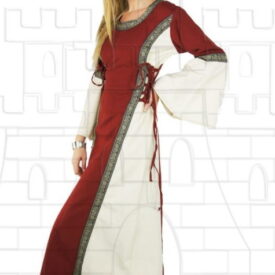Village festivals in Spain, popular street markets and other medieval events are a window onto a fascinating past. At these celebrations it’s common to see streets and balconies decorated with medieval banners, flags and awnings that transport us to the age of knights, guilds and commercial fairs. These elements are more than mere decoration; they recreate a past in which standards were crucial on the battlefield and served as identity symbols for the nobility and artisan guilds.
In the present context, the town council, brotherhoods and associations take care of dressing the streets with these elements to recreate the atmosphere of medieval fairs, an economic phenomenon that emerged in the Late Middle Ages. At that time cities grew, and with them long-distance trade, craftsmanship and finance. Today these events allow us to relive part of that history.
But what is the true story behind these banners and flags? What meaning did they have beyond decoration?
The Standard on the Battlefield: A Silent Cry
During the Middle Ages, standards and banners were much more than simple pieces of cloth. They were the silent cry of the battle, a visual communication system that allowed military units to identify themselves and stay together amid the chaos of combat. From the 10th century, banners were used by knights on their lances to signal their presence, as mentioned in the Cantar de mío Cid.

Flags had a predominantly military use. They were the badge of whoever could raise an army: a lord, a city, a military order or the king himself. The royal standard, for example, was the most important and accompanied the monarch, displaying the royal arms. Over time, towns and villages received their own “municipal standards,” which symbolized local pride. Losing one in battle was a great dishonor, demonstrating their strategic and symbolic importance.
The Role of the Standard-Bearer: Honour and Risk
Being a standard-bearer was an immense honour, reserved for the bravest and most trusted knights. However, the position involved great risk and an important limitation: the standard-bearer could not take an active part in combat. His main duty was to hold the emblem, serving as a reference point for the troops and marking his lord’s position. That visibility made them prime targets for enemies, as seen at the Battle of Bosworth, where Richard III personally killed his opponent’s standard-bearer.
The standard-bearer’s task was exhausting and dangerous. They had to watch the wind and the terrain to prevent the standard from becoming entangled, and their immovable position meant they depended entirely on the protection of their comrades. Despite the dangers and the frustration of not being able to join the fight, the work of these knights was crucial to maintaining army cohesion on the battlefield.
Canopy to provide shade at a medieval market
Beyond War: The Birth of Visual Identity
Over time the use of emblems spread beyond the military sphere. The art of heraldry, or the science of the coat of arms, arose during the Crusades to differentiate and define the social status of people, families, towns and regions. Coats of arms were a testament to excellence and honour, conveying identity through figures and emblems.
As society evolved and trade guilds emerged, these groups adopted the heraldic system. This gave rise to corporate heraldry, where merchants and artisans created their own shields and emblems, challenging the nobility’s monopoly on visual identity. These emblems were not just a matter of prestige; they also had a practical control function to prevent counterfeits, and artisans’ marks were registered publicly.
Guilds, Trades and the Medieval “Mark”
Guilds’ coats of arms usually included clear symbols of their trade: a pretzel for bakers, an ox and an axe for butchers, or the serpent for surgeons. These symbols were so recognizable that they were used on façades, coins and even to mark bales of wool. Standardization was key, and the design of these “marks” followed a regulated system that defined shapes, colours and figures.
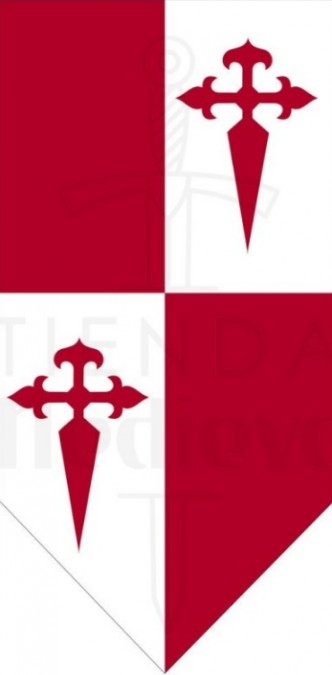
The design of these marks could be classified into several categories:
- Identifying or representative marks: Based on tools or objects of the trade, such as hammers for blacksmiths or scissors for tailors.
- Onomastic marks: Using the initials of the artisan’s personal name.
- Abstract marks: Created from geometric structures.
- Heraldized marks: Combining the previous marks within a shield.
- Symbolic marks: Incorporating religious or esoteric elements.
Families also made variations, known as “brisures,” to distinguish parents from children or different family branches. This practice, similar to that of the nobility, allowed the professional heritage to be perpetuated. In many cases, the mark also had to include the arms of the town of origin, uniting the prestige of the trade with that of the town.
Banners and Tournaments: Pageantry and Lineage
From the 14th century onwards, tournaments evolved from mere military training into grand spectacles of display. Heraldry and standards played a fundamental role. Knights had to demonstrate their lineage, and heralds proclaimed their ancestry while displaying coats of arms on shields, armour and on the caparisons of their horses. Arms were displayed in the knights’ chambers and on a special tree at the tournament grounds.
Tournaments were the perfect opportunity for a knight to publicly show his martial qualities, courtesy and nobility. They were social events lasting several days, with music, banquets and parades. The presence of ladies added a romantic element, spurring knights to further prove their bravery.
Medieval banners, from their crucial battlefield function as guides and symbols of honour to their role in building corporate identities for guilds, represent a sophisticated visual communication system. Their legacy laid the foundations for the brand identity concepts we know today. If you want to recreate this fascinating era on your own balcony, fair or event, you can find a wide variety of designs that will help you capture the essence of the Middle Ages.
SEE BANNERS | SEE FLAGS | SEE AWNINGS, TENTS AND MEDIEVAL MARQUEES

